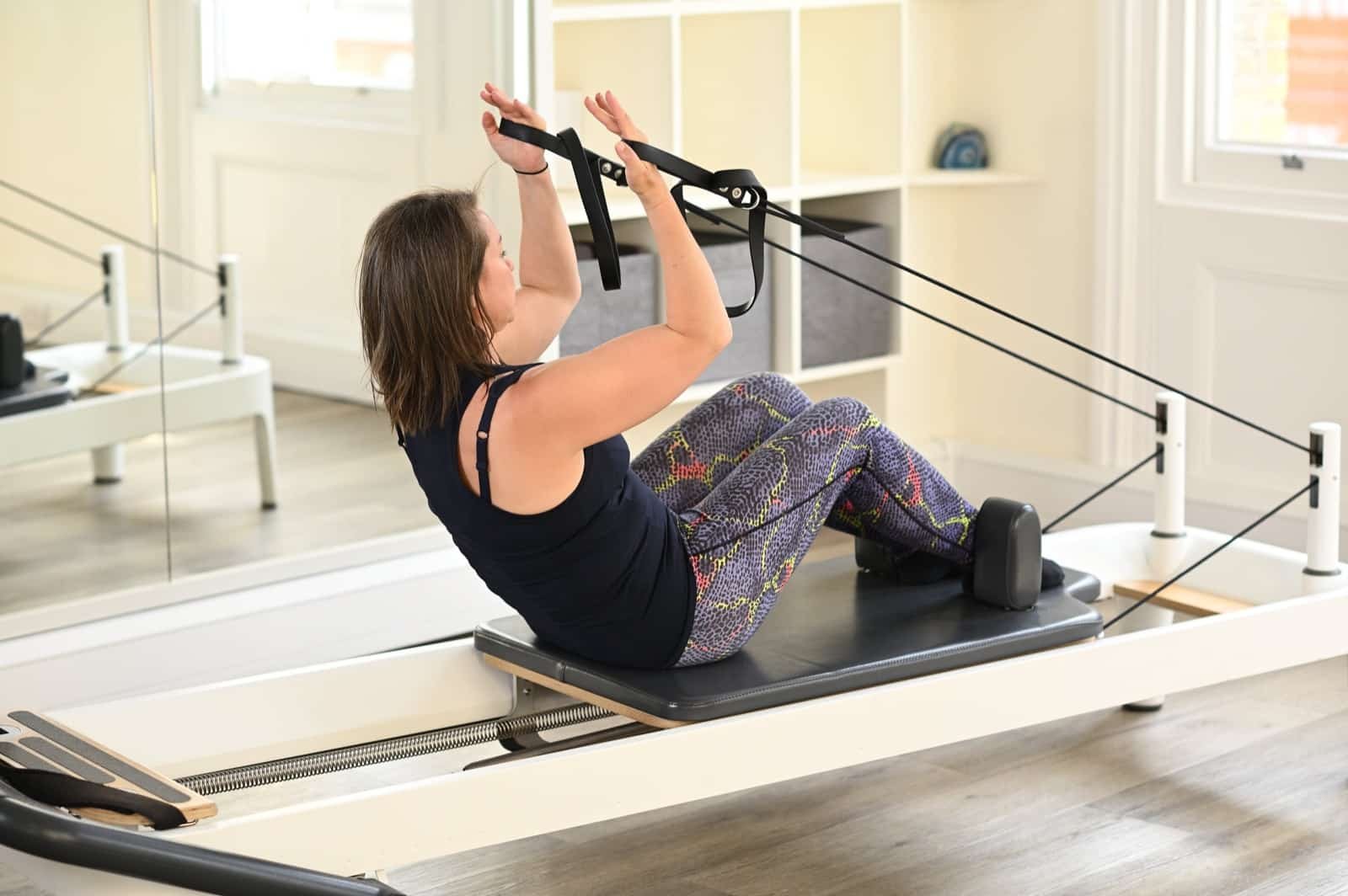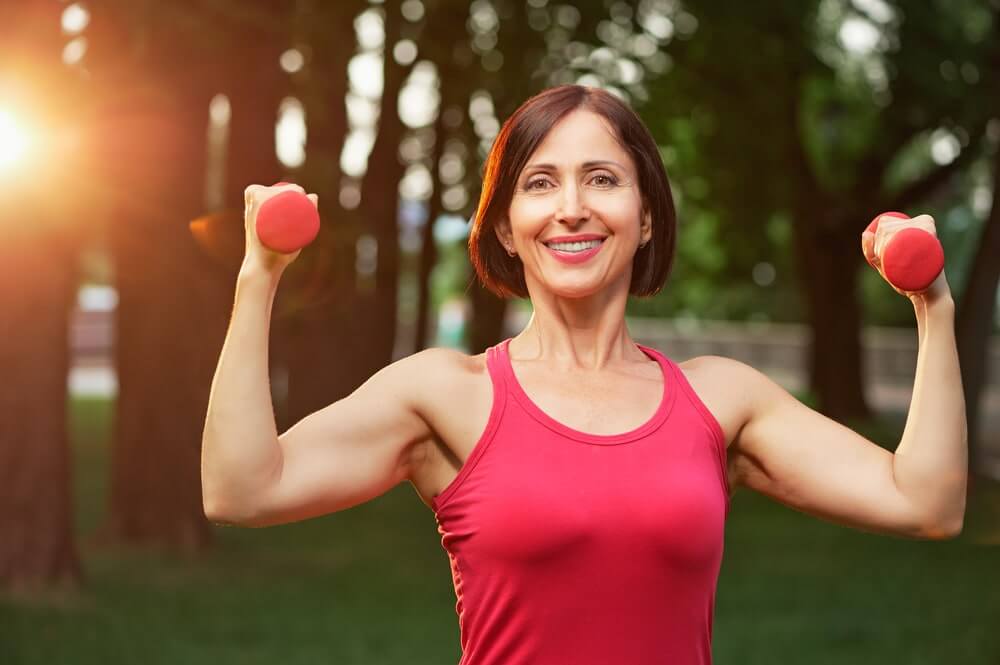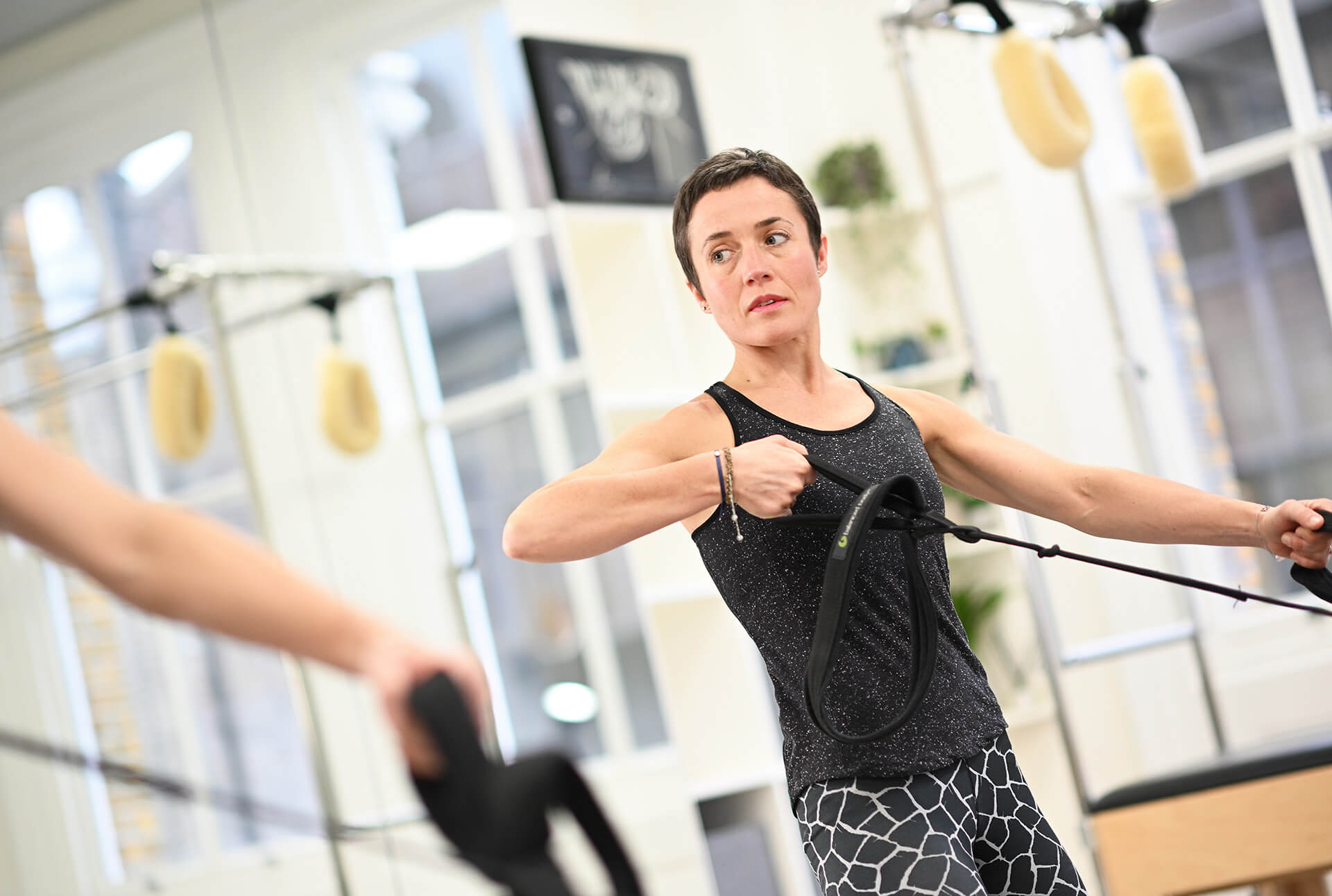Key Contributor: Susie Martin, Chartered Physiotherapist
Co-Contributors: Magda Strugariu, Clinical Pilates Instructor
Introduction
The Pilates reformer is a large piece of equipment that has become increasingly popular, not only for students of Pilates but also in the wider fitness world.
One of the reasons for the popularity of the Pilates reformer is its versatility. Pilates exercises using the reformer can be adapted to suit anyone, from the complete beginner to the professional athlete.
The reformer is a great tool for increasing general strength and flexibility, but it is also brilliant for physical rehabilitation. In particular, many people with back pain find the reformer helps them to exercise with less pain and the build the strength they need to return to daily activities.
To find out more about our top reformer Pilates exercises, keep reading, as we breakdown the what, how and why of reformer Pilates.
Key Takeaways
- The Pilates reformer is a dynamic exercise machine designed by Joseph Pilates, consisting of a sliding carriage, adjustable springs, pulleys, and a footbar — allowing for resistance-based exercises in a variety of positions (lying, sitting, kneeling, or standing).
- It offers adaptable resistance and support, making it suitable for everyone from beginners to athletes and for those rehabbing injuries. The springs can either assist movement for control and alignment or add resistance to build strength and stability.
- Using the reformer improves strength, flexibility, balance, and body awareness, while reducing pressure on the joints — making it ideal for both general fitness and rehabilitation, particularly for improving posture, core control, and managing back pain.
What is a Pilates reformer?
The Pilates reformer is a large piece of exercise equipment that was originally designed by Joseph Pilates, the creator of Pilates. Use of the reformer means that the basic repertoire of Pilates exercises can be expanded to include more resistance exercise and challenges to balance and stability.
The Pilates reformer consists of a sliding platform (called a carriage) set within a metal frame. The platform is attached by metal springs of varying resistance to the frame. The carriage is also attached to cables with handles that run through pulleys. At one end of the frame there is also a footbar.
The combination of all these features means that a variety of different exercises can be performed on the equipment, in a variety of different positions, from lying to standing.
The unique springs of the Pilates reformer can be used to add more resistance to exercises, increasing the challenge and helping to build strength. However the springs can also be used to add assistance to exercises, making challenging exercises more accessible.
The moving platform on the carriage can be used to add more dynamism to exercises, keeping them interesting, or alternatively to challenge balance and stability.
Essential Pilates reformer exercises
Beginner friendly reformer exercises
Footwork
The footwork exercise on the reformer is a fundamental exercise teaching good alignment of the hips, knees and ankles as well as strengthening of the legs.
To perform footwork, lie on your back, with the heels resting on the footbar. Have three springs attached to the carriage. Make sure that the feet are hip width apart and parallel. The centre of the knee cap should be aligned with the second toe throughout the movement. Press through the heels to send the carriage out, and then bend the knees to slowly bring the carriage back in. Maintain your hip, knee and foot alignment throughout.
The main muscles strengthened with increasing resistance are the bottom (gluteals) and thighs (quadriceps and hamstrings).
If we reduce the resistance of the springs, the load is less on the leg muscles, but adds a little bit of work to the abdominal muscles as they are challenged by the weight of the legs.
Footwork can be adjusted to increase the challenge on the front of the thighs – by going onto the toes. It can also be adjusted to increase the challenge on the calf muscles – by performing a heel raise type action whilst lying down.
Feet In Straps
The feet in straps exercise on the reformer requires a little more flexibility than the footwork exercise. You will need good hamstring length to perform this one. It is an exercise beloved by nearly all who come to Pilates, as they find it so relaxing!
To set up Feet in Straps – lie on your back on the reformer, with your feet on the footbar. Make sure you have two springs attached to the carriage. Lift one foot from the footbar and place it into one of the reformer straps. Press lightly into the strap to create some tension in the cable and then bring your second leg up and place into the other strap.
To perform feet in straps, press your feet into the straps, to send your legs out and up. Keeping the legs straight, lift them slowly towards the ceiling – but only as far as you can keep your tailbone heavy on the carriage. Then slowly lower the legs towards the ground, but only as far as you can keep the back of your pelvis heavy on the carriage. You should not feel your lower back arching away or forcing down into the carriage. Continue to lift and lower, only as far as you can keep the low back and pelvis still.
Add circles! Once you have got to grips with the lift and lower basic, you can add circles into Feet in Straps. Keeping the legs together, send them down towards the floor, then separate the feet and circle them back around and up to the top. Perform a few repetitions and then change direction, separating the feet at the top and sending them down, round, and back up the middle.
Supine Arm Series
The supine arm series on the reformer is a great exercise for building strength in the arms, as well as the abdominal muscles. It is also a great foundation exercise for some of the intermediate and advanced repertoire.
Set the reformer up with one spring attached to the carriage. Lie on your back with the feet resting on the footbar.
Take hold of the reformer straps (using the small loops if you have those), and reach your hands towards the ceiling. Press your hands gently into the straps, and lift one leg at a time up into what we call the ‘tabletop position’ with bent knees floating over the hips, and shins parallel to the ground.
Pull the straps down until your arms are floating by your sides, then slowly return the hands towards the ceiling, maintaining control of the carriage and straps. Continue to lift and lower the arms.
If you need less challenge on the abdominals, let your knees fold a little closer to the chest and the heels drop towards the bottom.
Intermediate reformer exercises
Scooter
The Scooter exercise is a well loved exercise which takes the Reformer repertoire into standing, making it functional for everyday activities.
We suggest performing the Scooter with one medium spring. Place one foot on the carriage, up against the shoulder pad with the toes tucked under. Have your outside leg on the floor, with the front of the toes level with the end of the carriage.
Sit your hips back as if you were going to sit on a chair, allowing your standing knee to bend a little. Keep one or both hands resting on the footbar. Your back should be straight.
Press the carriage back with your foot, maintaining your body position. Keep the same weight on the standing foot all the way through the exercise. Slowly slide the back foot back in.
Repeat 10 times.
Knee stretches

Knee stretches is a great exercise for upper body and core strength, and is a good preparation for more advanced planks.
Set the reformer carriage up with 2 springs. Kneel on the reformer carriage with your hands resting on the footbar. Your arms should be straight. Lift your bottom slightly away from your heels. Press the carriage back with your feet and knees, until your body is in a diagonal line from your knees to your shoulders. Slowly slide the carriage back in with your feet and knees.
Repeat 10 times.
Kneeling Arms Series Facing Front
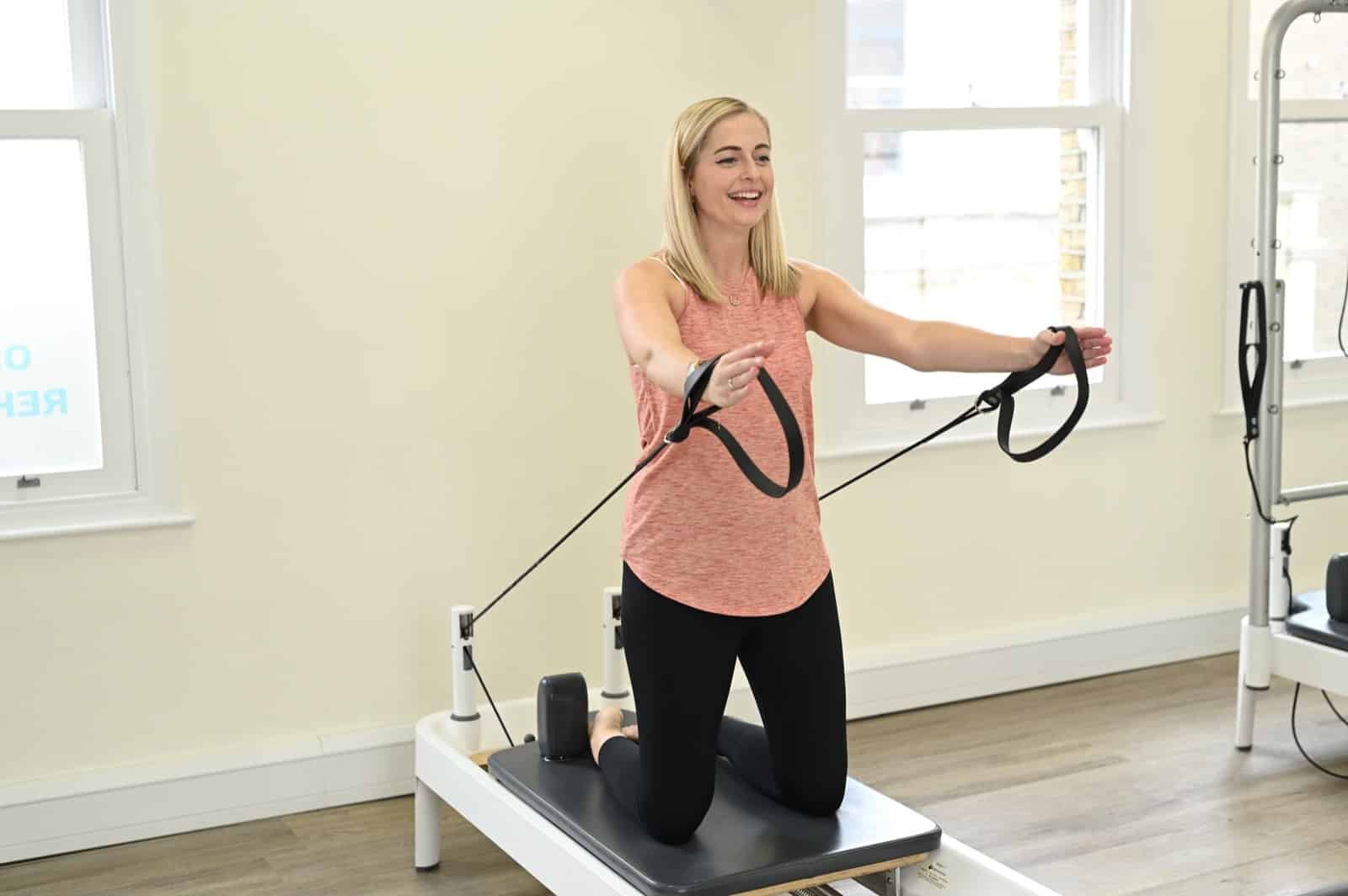
Knee stretches is a great exercise for upper body and core strength, and is a good preparation for more advanced planks.
Set the reformer carriage up with 2 springs. Kneel on the reformer carriage with your hands resting on the footbar. Your arms should be straight. Lift your bottom slightly away from your heels. Press the carriage back with your feet and knees, until your body is in a diagonal line from your knees to your shoulders. Slowly slide the carriage back in with your feet and knees.
Repeat 10 times.
Advanced reformer exercises
Supine abdominal series
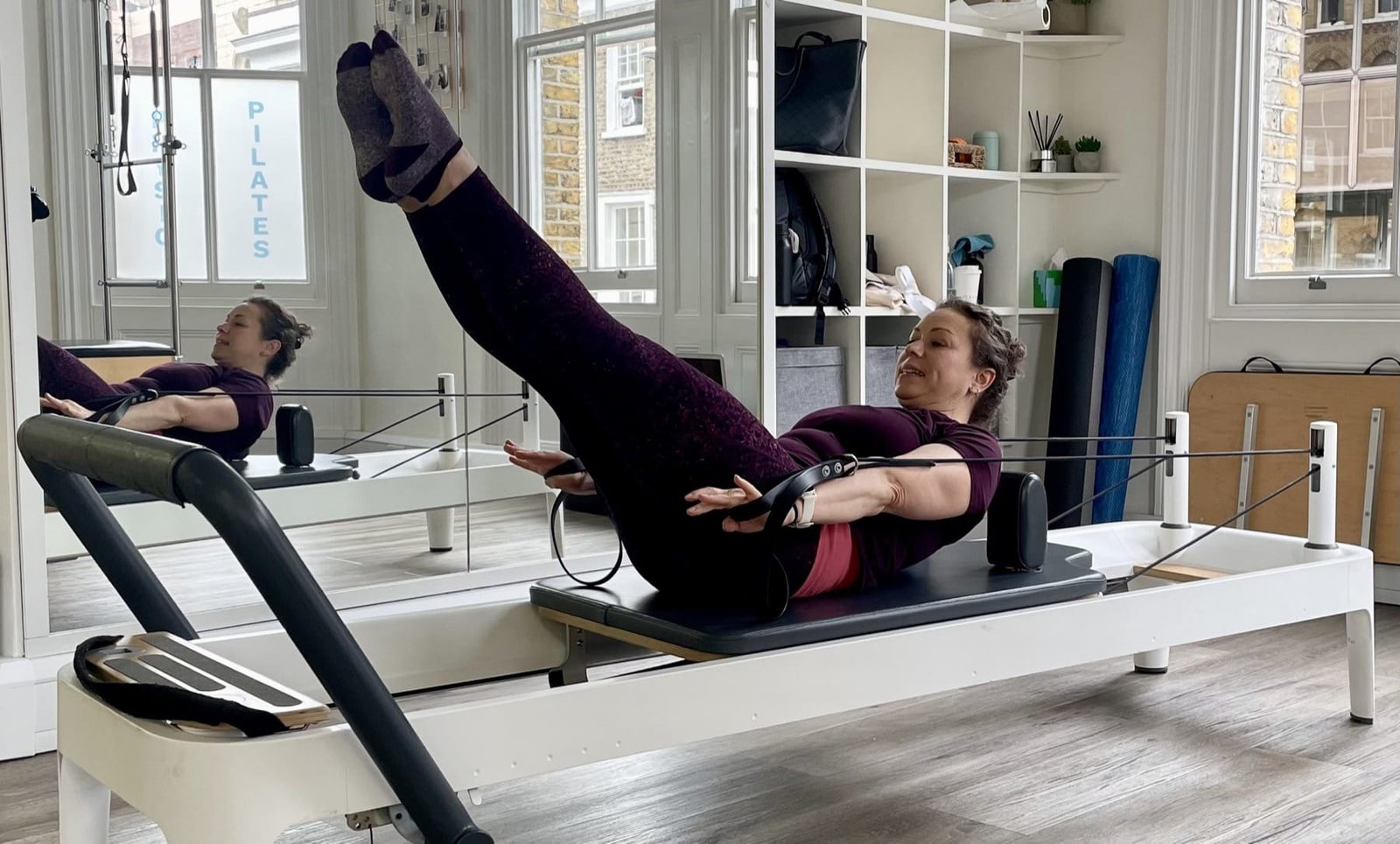
The supine abdominal series is an advanced progression from the supine arm series.
Set yourself up in the same position as your supine arm series. As you reach the arms towards the feet, curl your upper body and head away from the carriage, into a curl up.
You will feel your abdominals really challenged in this position!
Hold your curl up position and with the arms straight start to pulse your arms up and down. Keep breathing in and out and see if you can time your breathing to your arms pumping – breathing in for 5 counts and out for 5 counts. Repeat 5 times.
For another variation – hold your curl up position and bend and straighten your arms at the elbows, to work your triceps. Repeat 5 times.
Long stretch
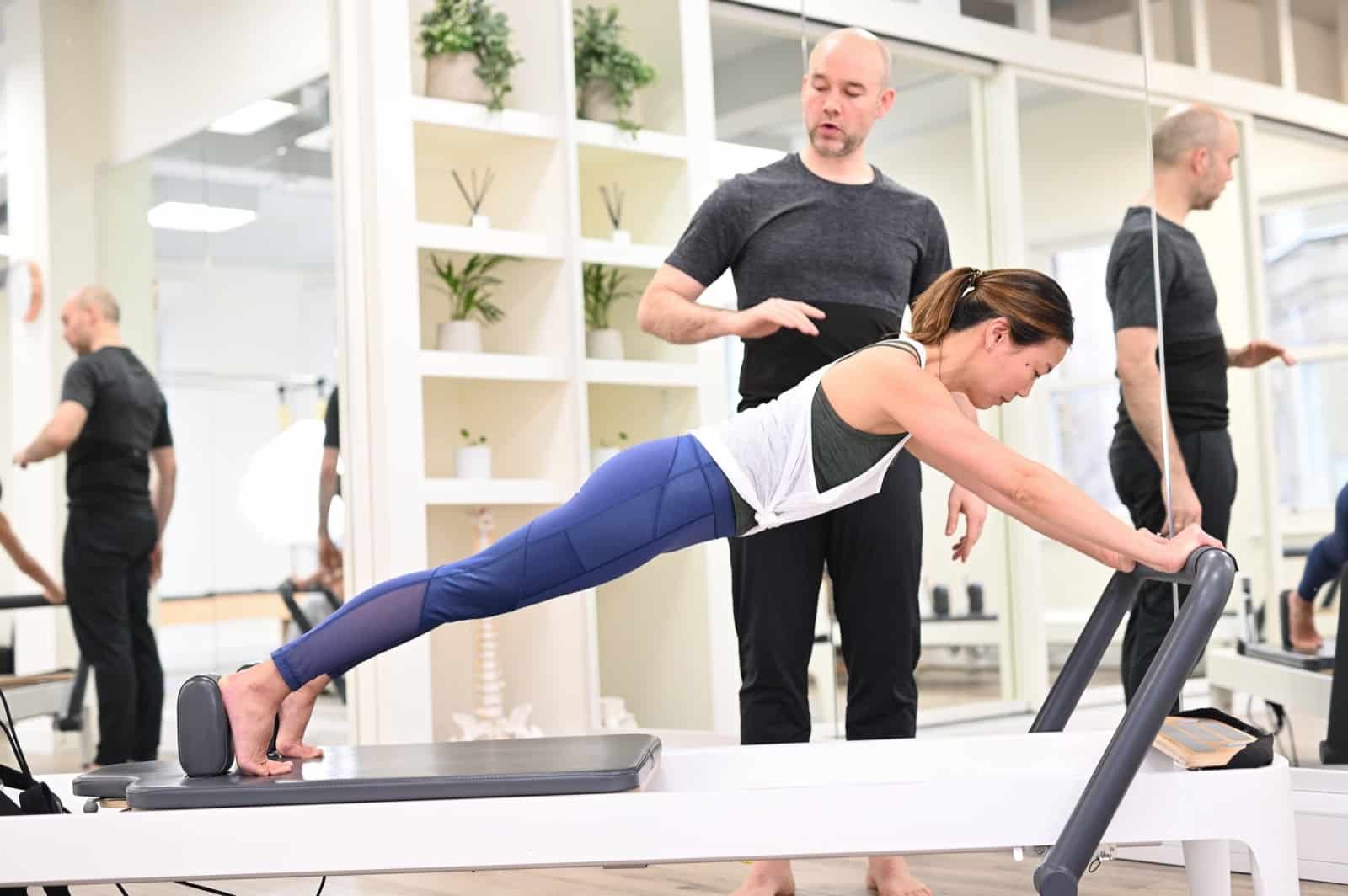
The long stretch is a lovely dynamic plank on the reformer, great for whole body strength.
Have the reformer carriage set up with two springs. Kneel on the carriage as for the ‘Knee stretches exercise’, with your hands resting on the footbar.
Hover the knees away from the carriage and press the carriage away until you are in a full plank position. From here press yourself away a little bit further from the footbar with your arms, then slowly pull yourself back in. Repeat 5 times.
Jackrabbit
The jackrabbit is a really challenging exercise which can flow on from the long stretch.
Set yourself up, as for the long stretch. Find your plank position with your shoulders positioned over your hands on the foot bar. Keeping your knees hovering off the carriage, press the carriage out and in, just using your feet.
Keep your back straight and your shoulders positioned over your hands, throughout the exercise. Repeat 5 times.
This is a brilliant challenge for the whole body but in particular the shoulders, front of thighs and abdominals.
What do our experts say?
“Reformer Pilates at Complete Pilates helped me to feel confident in my own body and its abilities, while it helped challenge me gently. I needed to improve my strength to manage my own low back pain. I remember the first time I tried the “short spine massage” exercise. I felt nervous at first but then excited that I could do it!” Magda Strugariu. Clinical Pilates Instructor
Feeling inspired?
If you want to experience the Complete difference and discover the benefits of one-to-one Pilates, book a session at one of our London studios or online today.
Our physiotherapist-led Pilates studios in Chelsea, our Angel Pilates studio and our Pilates studio in City, offer a highly tailored approach to your Pilates training, whether your goal is to manage a health condition, rehabilitate from an injury or to improve your strength and fitness.
Get in touch with us via email or contact us on 0203 764 5668 for further information.
Education is key:
These blogs are designed to give information to everyone, however, it is important to remember that everyone is different! If you have not seen one of our therapists and have any questions about injuries, what you have read or whether this may be useful to you, please just ask. We are more than happy to help anyone and point you in the right direction. Our biggest belief is that education is key. The more you understand about your injury, illness and movement, the more you are likely to improve.


